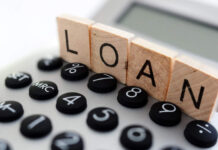Banks and other Non-Banking Financial Companies (NBFCs) provide customers with many investment options. Fixed Deposits, usually referred to as FDs, are one such investment option. They are a type of investment that lets you gain interest by depositing an amount for a fixed tenure.
Types Of Fixed Deposit
The banks in India provide different fixed deposit options. A few of them are:
- Standard Fixed Deposits: A standard fixed deposit allows investors to invest their money for a set period of time and provides a fixed rate of interest that typically depends on the tenure. A standard fixed deposit offers a higher rate of interest than a savings account. The duration may be between seven days to ten years.
- Tax-Saving Fixed Deposits: This FD has a mandatory lock-in period of five years, so investors cannot withdraw their money prematurely. Under Section 80C of the Income Tax Act of 1961, investors can claim a tax deduction of up to Rs 1.5 lakh by investing in Tax Saving Fixed Deposits. Only lump-sum deposits are allowed under this fixed deposit scheme.
- Cumulative Fixed Deposits: In a cumulative fixed deposit scheme, the interest is payable on maturity. The interest is compounded annually, semiannually, quarterly, monthly, bi-weekly, or weekly, and it is paid upon maturity of the fixed deposit.
- Non-Cumulative Fixed Deposit: Non-cumulative FDs are a type of FD in which the financial institution regularly pays investors the interest earned on the principal amount. It is suitable for those who require a regular interest-based income source.
- Senior Citizen Fixed Deposit: Senior citizen fixed deposits are a special kind of fixed deposit available to individuals over the age of 60 years. The scheme’s most significant feature is that it offers a higher interest rate than other FDs, helping senior citizens to meet a range of financial requirements. The interest rates are usually 0.25% to 0.75% higher than those of regular FDs.
- Flexi Fixed Deposits: These fixed deposits are linked to your savings account. Under this fixed deposit scheme, investors can start an FD account with an initial deposit and then link it to their savings account.
- Bank Deposits: Offered by banks to customers with existing saving accounts.
Features of Fixed Deposits
Through an FD, individuals invest a certain amount of money for a fixed time period at a predetermined rate of interest. The interest rate varies from one financial institution to another but is generally higher than the interest rate offered on savings accounts. Some of its features are:
- Returns: The most attractive feature of an FD is the assured returns on investment. Fixed deposits are better and more secure than any other type of investment since the returns are guaranteed as soon as the FD is opened. For instance, you can invest in Bajaj Finance Fixed Deposit, which offers an interest rate of 6.95% for 2 years. It also offers senior citizen benefits for anyone over the age of 60 years, for up to 0.25% p.a. extra.
- Flexibility: Another feature of FDs is their tenure flexibility. Investors have the option of investing funds for periods ranging from seven days to ten years. It is important to note, however, that the interest rate on a fixed deposit varies depending on its duration.
- Ease: You can open a fixed deposit account with a savings account by visiting a bank branch or completing the process online.
- Tax Benefits: Banks provide Tax-Saving Fixed Deposits that help investors claim tax exemptions.
- Loan Facility: In addition to interest rates, banks can offer a number of other advantages, such as the ability to borrow money against your fixed deposit account.
- Premature Withdrawal: It is advisable to review the terms and conditions of premature withdrawal before selecting a fixed deposit account with a bank. The terms for premature withdrawal are typically available on bank websites. Most banks charge a fee when you prematurely withdraw from a fixed deposit account.
How To Invest In An FD On Kuvera
- Download the Kuvera app and complete the KYC which is mandatory to invest in.
- Go to Invest > Fixed Deposits and check out FD options from multiple banks. Compare the tenure and fd interest rate and choose the one that works best for you.
- Complete the payment process and you are done within minutes!
Frequently Asked Questions (FAQs)
- What is the minimum amount required to open a Fixed Deposit account through Kuvera?
You must deposit a minimum of Rs. 5,000 to open a Fixed Deposit through Kuvera.
- What maximum amount can be invested in a Fixed Deposit through Kuvera?
As much as Rs. 5 Cr. can be invested in a Fixed Deposit through Kuvera.
- Who should invest in a Fixed Deposit?
- Individuals with low-risk tolerance
- Investors who want to balance the risk in their portfolio.
- Senior citizens who want to ensure investment stability



































































